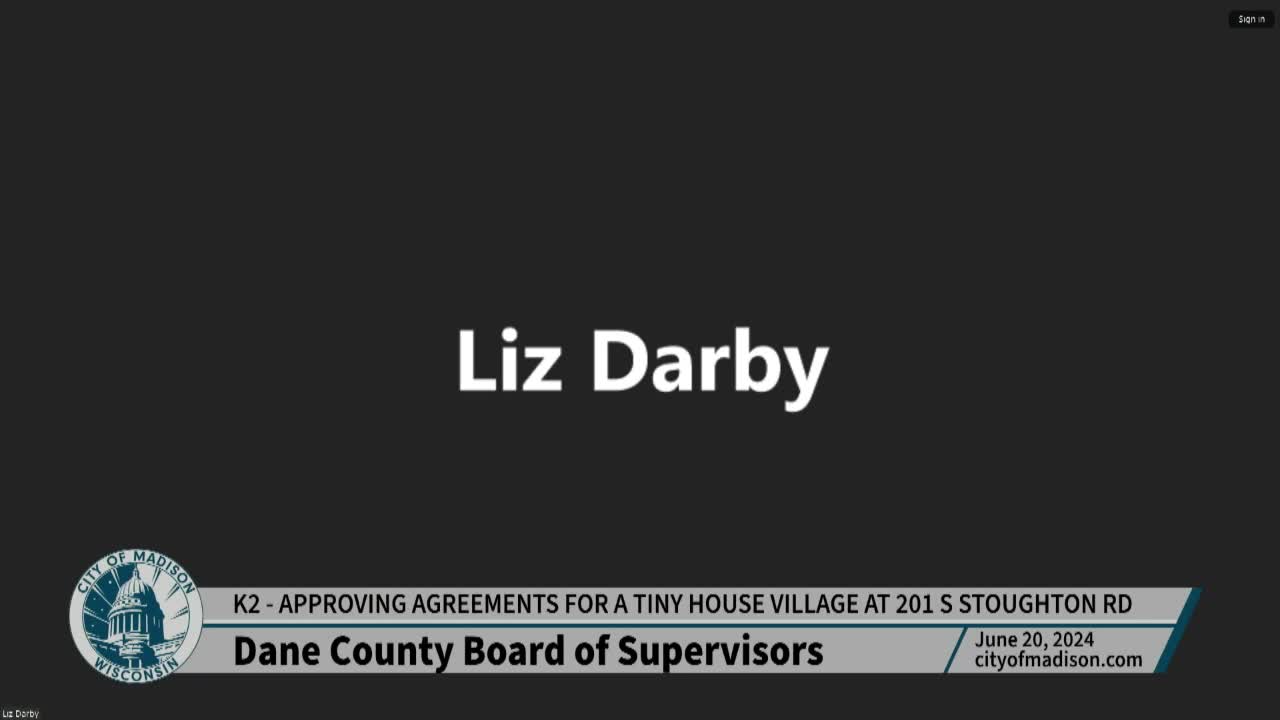City's tiny home solution faces zoning and safety hurdles
June 20, 2024 | Dane County, Wisconsin

This article was created by AI summarizing key points discussed. AI makes mistakes, so for full details and context, please refer to the video of the full meeting. Please report any errors so we can fix them. Report an error »

In a recent government meeting, significant concerns were raised regarding the classification of individuals living in occupied Madison villages as unsheltered. It was highlighted that the city of Madison includes these residents in its unsheltered population statistics, despite their living arrangements in tiny homes, which some officials argue are not a sustainable long-term solution for reintegrating individuals into society.
The discussion also touched on the land use process, which was described as unusually swift, taking only about 60 days from application to approval. However, several inconsistencies were noted between the submitted plans and the requirements set forth by both Dane County and the city’s zoning code. For instance, the county mandates a 20-foot fire lane and a 10-foot separation between homes, which, if adhered to, would prevent the accommodation of 20 homes on the designated property.
Moreover, the zoning code under the comprehensive plan was said to be incompatible with the current proposals, raising further questions about the viability of the tiny house village project. Specific issues were identified regarding the Conestoga Hut structures, which cannot be relocated to Stoughton Road due to their design not meeting the necessary roadworthy criteria.
The meeting underscored the complexities and potential pitfalls of the current housing strategy, with officials expressing concern that the approach taken by Occupy Madison may inadvertently limit their options and intentions as outlined in their letter of intent. As the process unfolds, these discrepancies are expected to become more pronounced, prompting calls for a reevaluation of the planning and zoning regulations involved.
The discussion also touched on the land use process, which was described as unusually swift, taking only about 60 days from application to approval. However, several inconsistencies were noted between the submitted plans and the requirements set forth by both Dane County and the city’s zoning code. For instance, the county mandates a 20-foot fire lane and a 10-foot separation between homes, which, if adhered to, would prevent the accommodation of 20 homes on the designated property.
Moreover, the zoning code under the comprehensive plan was said to be incompatible with the current proposals, raising further questions about the viability of the tiny house village project. Specific issues were identified regarding the Conestoga Hut structures, which cannot be relocated to Stoughton Road due to their design not meeting the necessary roadworthy criteria.
The meeting underscored the complexities and potential pitfalls of the current housing strategy, with officials expressing concern that the approach taken by Occupy Madison may inadvertently limit their options and intentions as outlined in their letter of intent. As the process unfolds, these discrepancies are expected to become more pronounced, prompting calls for a reevaluation of the planning and zoning regulations involved.
View full meeting
This article is based on a recent meeting—watch the full video and explore the complete transcript for deeper insights into the discussion.
View full meeting
